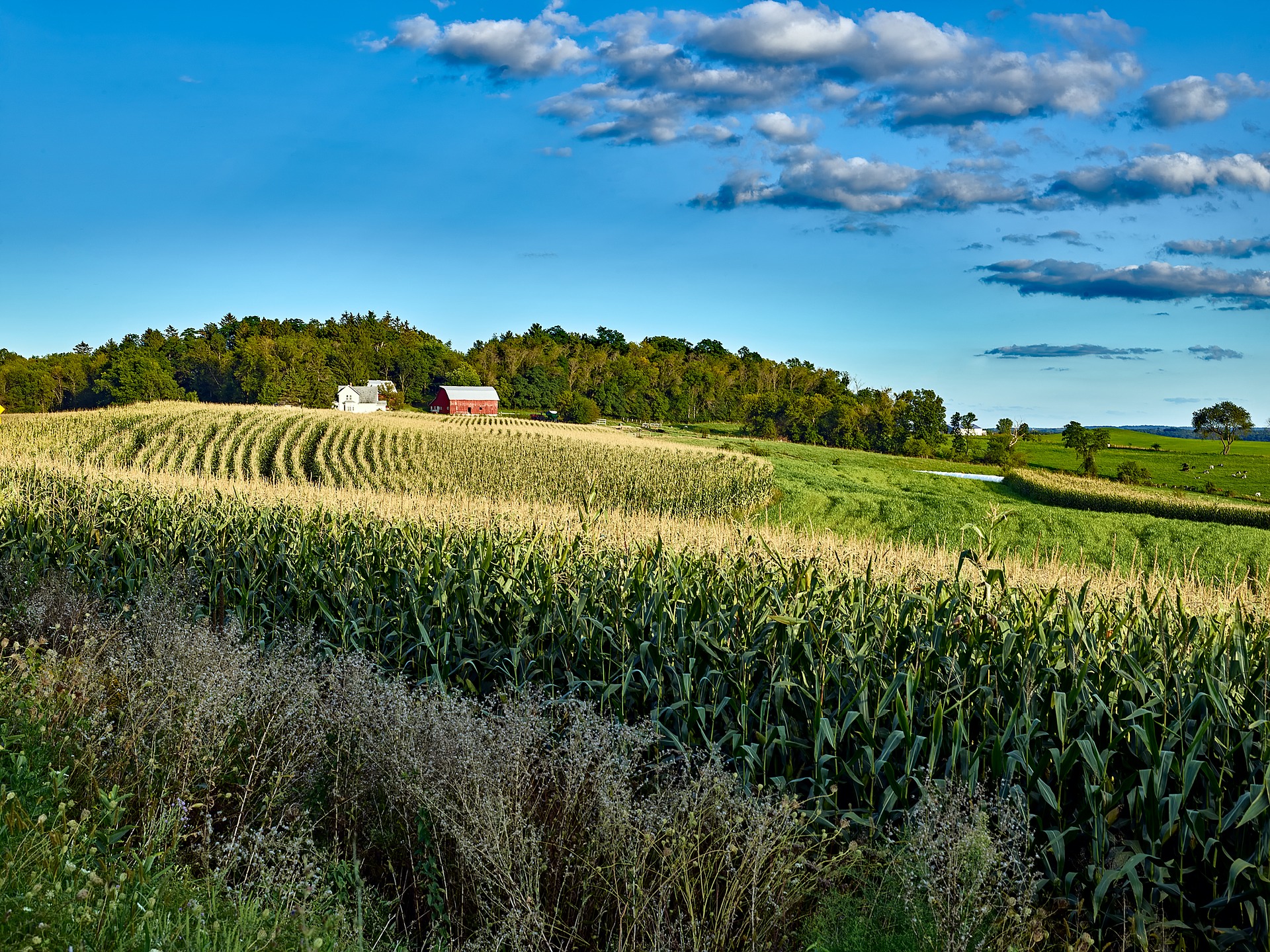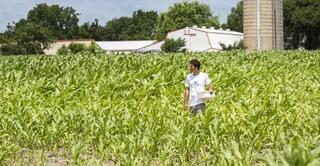
Agriculture is the defining feature of many rural North American landscapes. Over time, a focus on productivity and large-scale cultivation of commodity crops has resulted in agricultural landscapes dominated by large, homogenous fields, such as the corn and soy that blanket the Midwest.
But agricultural landscapes provide more than just the crops grown on them. They also offer animal and plant habitat, clean our water and air, and capture carbon in the soil—a host of services often termed ecosystem services. Many key co-benefits are thanks to insects and other arthropods: they pollinate crops, eat herbivorous pests, and help break down organic matter to build healthy soil.
An extensive review, published by researchers at the Great Lakes Bioenergy Research Center and Wisconsin Energy Institute in the journal Advances in Ecological Research, explores the potential to design agricultural landscapes that intentionally support both crop production and biodiversity.
“Agricultural landscapes don't just happen by accident,” says co-author Ben Iuliano, a graduate student at the University of Wisconsin–Madison. “They are the result of environmental geophysical conditions and human choices, such as economies and movement through history.”
The new work, featured in a special issue on “The Future of Agricultural Landscapes,” merges ecological research with considerations of social and economic forces to develop a set of guiding principles for the design of arthropod-friendly agricultural landscapes.
“We design cities to make them livable and sustainable. Agricultural landscapes are also largely human-dominated, and we should be thinking carefully about what we want to design them for,” says co-author Nate Haan, a postdoctoral fellow at Michigan State University. “We could be designing agricultural landscapes in a way that maximizes biodiversity and leverages ecosystem services.”

Diversity by Design
In the new report, the researchers synthesized a decade of ecological research and combined this with a broader consideration of the social contexts of agriculture. They derived lists of guiding questions that designers and planners can use to help shape landscapes that can enhance insect-driven ecosystem services.

This sort of intentional design will require transdisciplinary change and a different mindset than has guided past agricultural decisions, says Michigan State University entomology professor Doug Landis, another co-author. “We don’t need to just accept the landscapes that policy and economics have provided us. We need to turn that on its head and think about how we can design landscapes to actually provide us with the goods and services that we want.”
Some of the needed decisions can be made by individual growers, such as whether to maintain natural or semi-natural habitat in or next to fields. Other choices must occur at a community level or beyond. “Ecology plays out at larger spatial scales,” Haan says. “To achieve some of these goals … that involves coordination among landowners.”
Policy changes can help incentivize landscape-scale action. Many farm subsidies and crop insurance policies are based on historical yields of commodity crops. But crop-neutral insurance policies can reduce barriers for farmers to grow crops other than corn, soy, cotton, or wheat. Another idea is agglomeration bonuses, which would compound practice-related payments or other benefits when multiple farms in an area collectively adopt complementary practices.

In general, practices that promote diversity will also bring insect and ecosystem benefits, says paper co-author Claudio Gratton, an entomology professor at UW–Madison and investigator with the Wisconsin Energy Institute. But “how do you reward diversity in a system that generally rewards efficiency and specialization?” he asks. Valuing such outcomes may require a shift in thinking.
Potential of Bioenergy
Today, corn and soybeans dominate the landscape of the Midwest. But what’s now the Corn Belt used to be predominantly tallgrass prairie, which grows remarkably well in the area and has many characteristics that could be very beneficial as a bioenergy cropping system. Perennial grasslands are highly productive and also provide many of these other ecosystem services and biodiversity that we want, Landis says. “I view bioenergy cropping systems as a real opportunity to perhaps change agricultural landscapes for the better if we make the right choices about where and what to grow,” he says.
Even small changes can make a difference. Most fields contain some areas that are low-yielding and often unprofitable to farm. Converting those unproductive or marginal lands—which account for about 20 to 25 percent of the land currently farmed—to perennial grasses or other low-maintenance bioenergy crops would add habitat and greatly change the configuration of the agricultural landscape. This has become a focus for the Great Lakes Bioenergy Research Center.
“To me, that's one of the most exciting new ideas that's come out in the last couple of years,” Landis says. “By changing small areas of the landscape, we could have big effects on biodiversity and ecosystem services.”
Perennial crops support insects and other wildlife by providing resources through a longer growing season than fully harvested crops such as corn and soybeans. They also fit into a “climate smart” agricultural framework that emphasizes long-term resilience against climate shocks as well as climate mitigation co-benefits, such as sequestering carbon in the soil, Iuliano says.
“It's hard to create a market valuation for the services that these organisms provide,” Gratton adds. But diversity—at all levels of the agricultural system, from plant and animal communities to growers, farms, and landscapes—can help buffer the effects of economic, market, and environmental change.
“We're taking the first steps to say this needs to be a broader conversation about planning, design … and our ability to support a broad suite of ecosystem services,” Gratton says. “Designers, planners, and policymakers need to be able to add these ideas to the decisions that are being made about what landscapes should be able to produce. It's not just about quantity anymore.”
Funding for this research was provided by the Great Lakes Bioenergy Research Center, U.S. Department of Energy, Office of Science, Office of Biological and Environmental Research (Award DE-SC0018409), National Science Foundation Long-term Ecological Research Program (DEB 1832042) at the Kellogg Biological Station, Michigan State University AgBioResearch, and Agriculture and Food Research Initiative of the USDA National Institute of Food and Agriculture (Award 2018-67013-28060 and CAP grant 2019-68012-29852).